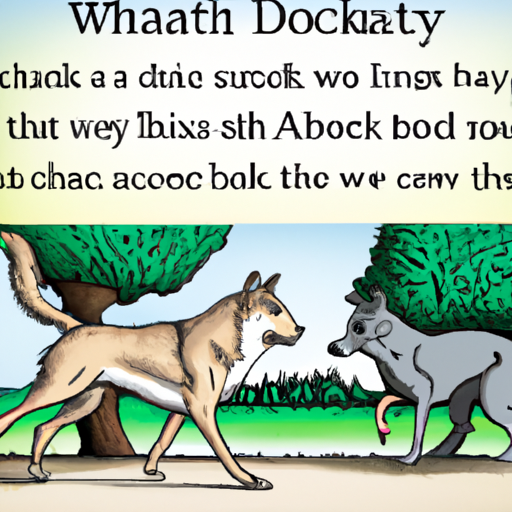Understanding the Nature of Coyotes
You’ve seen them lurking in your backyard, their eyes gleaming in the moonlight. Yes, we’re talking about coyotes. These creatures are known for their cunning and adaptability, traits that allow them to survive in diverse environments, from deserts to urban landscapes. But why do they attack dogs?
The answer lies in their predatory instincts. As a caregiver, you understand the importance of protecting those in your care, and coyotes are no different. They’re hunters before anything else, and dogs, especially smaller breeds, can seem like suitable prey.
Here’s a table outlining the key characteristics of coyotes that contribute to their predatory nature:
| Characteristic | Explanation |
|---|---|
| Adaptive | Coyotes can thrive in a variety of environments, including urban areas. |
| Opportunistic | They seize opportunities for easy food sources, which can sometimes be pets. |
| Cunning | Coyotes are known for their intelligence and can quickly learn to associate humans and their pets with food. |
The Role of Territorialism
Another factor to consider is the territorial nature of coyotes. Just as you protect your home and your loved ones, coyotes defend their territories fiercely. If your dog wanders into a coyote’s territory, it could be seen as a threat.
Here are some signs that a coyote might be marking its territory near your home:
- Increased coyote activity or sightings
- Audible howling, especially at night
- Unusual or aggressive behavior toward pets
Mitigation: How to Protect Your Dog
Now that you understand why coyotes might attack dogs, the next step is learning how to protect your furry family members. Here are a few tips:
- Keep your dog on a leash, especially during early morning and evening hours when coyotes are most active.
- Don’t leave pet food outside, as it can attract coyotes.
- Install motion-sensing lights to deter coyotes from approaching your home.
Understanding the Bigger Picture: The Impact of Urbanization
Coyotes aren’t villains. They’re simply trying to survive in a world that’s becoming increasingly dominated by human beings. As urbanization continues to encroach on wildlife habitats, encounters between humans (and their pets) and coyotes are likely to increase.
FAQs
Q: Why do coyotes attack dogs?
A: Coyotes are predators and may see dogs as potential food or threats, especially if the dog enters their territory.
Q: How can I protect my dog from coyotes?
A: Keep your dog on a leash, don’t leave pet food outside, and install motion-sensing lights.
Q: Why are coyotes in urban areas?
A: Urbanization has encroached on their habitats, forcing them to adapt to living in cities and towns.
Q: Are all coyotes dangerous?
A: Not all coyotes are dangerous. However, it’s best to keep a safe distance and not to encourage interaction by feeding them.



